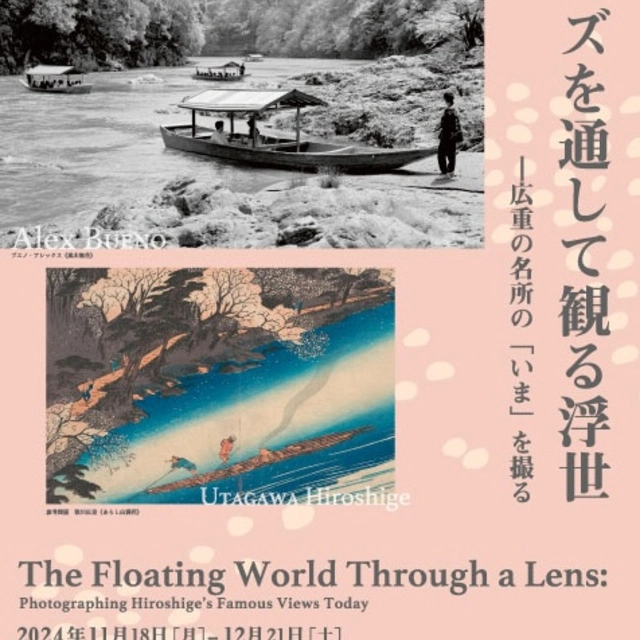Hiroshige Utagawa (1797-1858), a leading ukiyo-e artist of the Edo period, is a masterpiece of famous paintings “One Hundred Views of Edo Famous Places” (Ansei 4/1857), cuts out the famous places of Edo at the end of the Edo period from a novel and lyrical angle. Now, in Kasumigaseki, a government office district, kites are flying quietly, and Ueno’s Fushino Pond is still bustling with cherry blossom viewing visitors. Through Hiroshige’s eyes, we can feel the state of the town of Edo up close and with a somewhat nostalgic feeling. On the other hand, Hiroshige’s “Kyo Famous Places” (around 1834) depicts famous places inside and outside Kyoto, such as Arashiyama and Kinkaku-ji Temple, in a sense of the season.
Nearly two centuries have passed since Hiroshige vividly photographed the towns of Kyoto and Edo, and both Kyoto and Tokyo have changed greatly. Roads, buildings, vehicles, and of course people’s clothing and behavior have changed. Regardless of shrines and temples such as Gionsha and Kiyomizu-dera Temple, Shinagawa, Takinogawa, and of course Kasumigaseki, it seems that there is no trace of that time. Some of the famous places drawn by Hiroshige even seem to leave only their names. But is it really like that? I wonder if there is actually “something” in Hiroshige’s Shinagawa and our Shinagawa that can communicate like the bottom stream. There is a photographer trying to take a picture of it.
In this exhibition, American photographer Bueno Alex will display photos of the famous place “now” drawn by Hiroshige, and we would like you to enjoy how the main song, Hiroshige’s work, is revived in modern times.

 Kyoto, Japan
Kyoto, Japan